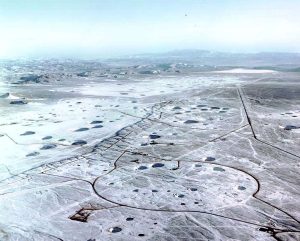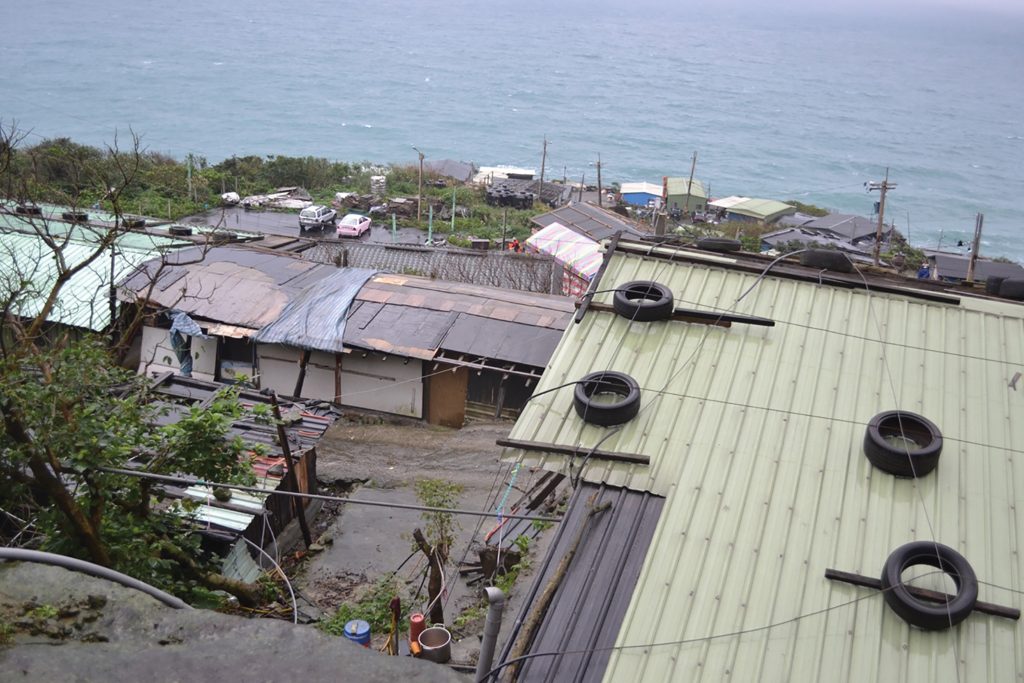In her timely IJURR Lecture titled “Imperial Geographies, the Wilderness and the Grave,” Neferti X. M. Tadiar, Professor of Women’s, Gender, and Sexuality Studies at Barnard College, reflects on the omnicidal and terraforming violence of imperial war. Extending Helga Tawil-Souri and Dina Matar’s notion of “Gaza as Metaphor” Professor Tadiar traces the histories of U.S. colonialism in the Philippines through spectacular surges and the slow violences of colonial appropriation and occupation over the long twentieth century. Through these histories, she brings us to the material and figurative landscapes of the wilderness and the camp, the forest and the town, in which nature, land, and life are remade as sites of accumulation. Providing a richly textured account of property-making through imperial and capitalist entanglements, Professor Tadair leaves us to reflect on the types of alternative life-making practices required for collective survival and decolonizing futures.
Inspired by these insights, and by the urgency of the omnicidal forces at work in our world today, IJURR’s Editorial Collective has assembled this virtual issue on Imperialism, Nature & Property. It draws together ten insightful IJURR articles published in the past decade or so on the imperial underpinnings of property-making across a range of geographic and sociopolitical contexts. Detailing local histories and contemporary practices of appropriation, this collection sheds light on the legal assemblages, cultural imaginaries, and imperialistic logics that underlie the transformation of nature into property. It concludes with reflections on some alternative life-making practices, including artistic production and urban Indigenous youth activism, that are challenging colonial property regimes.
In the first piece, written more than a decade ago on the ruinous character of U.S. imperialism, Julia Hell and George Steinmetz remind us that while “geo-imperial dynamics are of course usually intertwined with the logics of capitalism, they cannot be reduced” to them. Together with two additional pieces on the workings of imperial power in the U.S. colonial territories of Guåhan/Guam and Puerto Rico, Hell and Steinmetz situate the property of the Las Vegas strip in centuries of American militarism, religious conversion, resource extraction, and colonial administrations established to manage and extract labor from internally colonized populations. Further linking U.S. imperialism to transformations of land and nature, Kyle Galindez demonstrates how U.S. imperial power, leveraged in Guåhan as strategic sites of military incursion, has enabled the extension of capitalist urbanization across the planet. Danielle Rivera’s piece, meanwhile, illuminates the ecological conditions and ways that repeated disasters have been leveraged to deepen colonial rule in Puerto Rico, detailing the procedural vulnerabilities that help produce and sustain colonial property-making.

The crater-scarred landscape of the Nevada Test Site. Most subsidences leave saucer-shaped craters varying in diameter and depth, depending upon the yield, depth of burial, and geology. This is the north end of Yucca Flat. Most tests have been conducted in this valley. 2016, National Nuclear Security Administration. Copyright: public domain
The next four pieces delve deeper into the material and discursive practices that have underlay property making in colonial and postcolonial India and Africa. In her now classic piece on Chennai’s Marina Beach and its shifting colonial, national, and neoliberal imaginings, Pushpa Arabindoo demonstrates the inseparability of property from its colonized subjects. Arabindoo analyzes contestations over Marina Beach as a shared space alongside and intertwined with competing conceptions of Chennai’s Indigenous populations as both a public (legitimate) and a crowd (illegitimate). Noting similar dichotomies that shaped property regimes in colonial Durban, Marius Pieterse and Thomas Coggin draw our attention to four informal, or ‘in between’ spaces, that remain outside the dichotomy. Highlighting the contemporary spatial injustices that remain rooted in imperial geographies and their last institutions and legal regimes, they advocate for new socio-legal assemblages that “validate the plurality of property in its many legal and everyday practices.” Asher Ghertner, meanwhile, addresses similar themes in his reflections on “lively” non-privatized lands, like those of Delhi’s Shiv Camp, but suggests instead that their “in-betweenness” may provide inspiration for radical housing struggles elsewhere. Rooting their power or “liveliness” in two key characteristics – their fungibility and their combinatoriality – Ghetner helps us see how such lands may resist the complete conversion into property. Last in this set, Achamyeleh Gashu Adam draws on rich fieldwork in the outskirts of Ethiopia’s Bahir Dar City to reveal the imperial logics underlying property-making–even in non-colonial contexts–highlighting the dispossession of periurban landholders through the transformation of agricultural lands into urbanizing property.

Riyar, a niyaro in the city of Keelung (photo by the Tomonori Sugimoto, January 2016)
The final three pieces in the collection draw from extensive fieldwork on Indigenous and anticolonial resistance in Taipei, Detroit, and Jeju, South Korea to offer examples of the alternative life-making practices upon which Professor Tadiar asks us to reflect. Tomonori Sugimoto’s detailed ethnography in two sites of Indigenous and decolonial urbanism in Taipei, reveals some ways that Indigenous activists and artists are challenging their erasure and claiming presence in the city through counter-mapping projects, art installations, and edible landscapes. Kyle Mays highlights similar examples of Indigenous expressive culture in Detroit, but emphasizes the solidarities that have been forged between Indigenous youth activists and Detroit’s African American majority since the early 1940s and into the Emergency Management era of the early 2010s. And lastly, Youjeong Oh’s insightful case study of the Top-dong Movement of the 1980s, further reveals the imperialistic logics underpinning resource privatization and property-making projects, while reflecting on the explicitly anticolonial claims made by Jeju islanders. Centering the islanders’ claims for sovereignty and self-determination, Oh highlights some of the struggles underway against urban development that are contesting, disrupting and challenging colonial property regimes.
Highlighting the imperial underpinnings of property-making across a range of geographic locations and property-making projects, the articles and essays in this IJURR virtual issue on Imperialism, Nature, Property call our attention to the complex entanglements of imperialism and capitalism. We invite you to (re)read these pieces and to join us for Neferti X. M. Tadiar’s IJURR Lecture Imperial Geographies, the Wilderness and the Grave at the 2024 AAG, 3.00-4.20pm (HST) on 18th April 2024. (This streamed session will be chaired by IJURR Editor, Liza Weinstein. The talk will be delivered virtually and can be viewed online for virtual attendees. In-person attendees are welcome to view the lecture in room 313B (O`ahu), Third Floor, Hawai’i Convention Center.)
Liza Weinstein
IJURR Editor
April 2024
Ruinopolis: Post-Imperial Theory and Learning from Las Vegas
Julia Hell & George Steinmetz
PLANETARY URBANIZATION AND IMPERIALISM: A View from Guåhan/Guam
Kyle Galindez
Disaster Colonialism: A Commentary on Disasters beyond Singular Events to Structural Violence
Danielle Zoe Rivera
‘City of sand’: Stately Re-Imagination of Marina Beach in Chennai
Pushpa Arabindoo
PROPERTY’S SHADOW: Governing Land and Plurality in Durban, South Africa
Marius Pieterse & Thomas Coggin
Lively Lands: The Spatial Reproduction Squeeze and the Failure of the Urban Imaginary Asher Ghertner
Land Tenure in the Changing Peri-Urban Areas of Ethiopia: The Case of Bahir Dar City
Achamyeleh Gashu Adam
CLAIMING SPACE, LAND AND ECOLOGY: Mapping Geographies of Indigenous and Decolonial Urbanisms in Taipei
Tomonori Sugimoto
THE CITIES WE CALL HOME: Indigeneity, Race and Settler-Colonial Urbanisms
Kyle T. Mays
AGAINST THE COLONIZATION OF URBAN DEVELOPMENT: The Top-dong Right to the City Movement in Jeju, South Korea
Youjeong Oh
